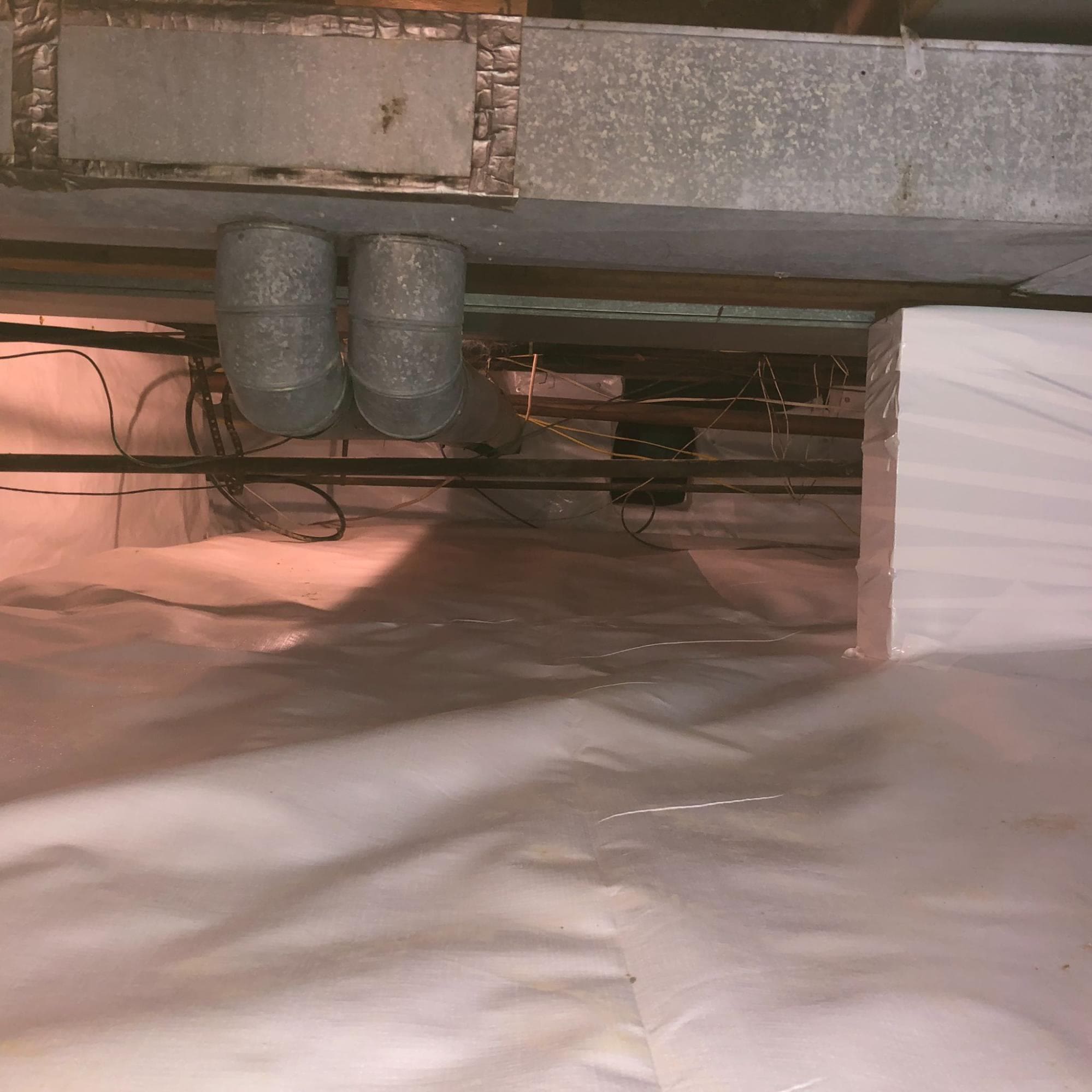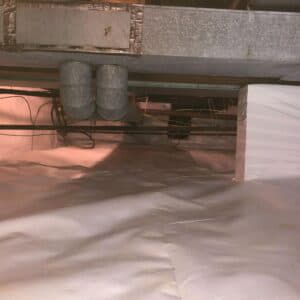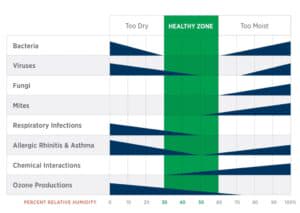Crawl Space Encapsulation: Pros and Cons

For most of us, our home represents our greatest financial investment. Our home is also our shelter, a refuge from the stresses of traffic, deadlines, and everyday frustrations. You need a home to protect yourself and your family, as well as your belongings. Protecting and maintaining your home are essential needs; these preserve your investment in the future.
Acculevel is a family business that specializes in waterproofing and foundation repair. Since our start in 1996, our focus has always been on helping homeowners take care of their homes. Our service area includes all of Indiana and portions of the surrounding states, and we have repaired homes for more than 30,000 homeowners in this region.
In this article, we’re going to define encapsulation, clarify why it’s so good for you and your home, and evaluate the potential drawbacks.
What is Crawl Space Encapsulation?
Crawl space encapsulation is an industry term for sealing the area below your home. A heavy-duty liner is attached to your foundation walls, across the dirt floor, and around any support columns. Encapsulation is done after a water drainage system is installed, and requires a dehumidifier to help moderate any remaining humidity or moisture that can form inside the sealed crawl space.
Not every home with a crawl space is encapsulated. Encapsulation isn’t something home builders typically do; it is not required by any building codes or residential requirements. This is for the best, since waterproofing a home is best left to specialized contractors like Acculevel. But encapsulation is increasingly popular with homeowners, as working from home has become more common.
Encapsulation is a necessary step to achieving healthy air quality in your home.

This photo was taken by an Acculevel crew member, after finishing a customer’s encapsulation. You can see the liner extends up the walls, around a support column, and across the floor.
Why is Crawl Space Encapsulation Recommended?
Encapsulation protects your home from anything undesirable coming in through the crawl space. Your crawl space doesn’t have a true floor; the bottom of the space is the ground beneath your home. This means moisture, vapors, and gases that evaporate from the soil are released into the crawl space. And since 40-50% of the air you breathe comes from the crawl space, that means those evaporating fumes are getting into your lungs.
Encapsulation Reduces Allergens
Encapsulation helps prevent pollen and other allergens from getting into your home. When the liner is secured to the walls, the joist boxes (spaces around the floor joists) are filled with spray foam insulation. Between the liner and the spray foam, drafts are thoroughly blocked and sealed, keeping outside air from bringing in any allergens. Spray foam insulation repels water, completely fills even the smallest gaps, and is inorganic- which means it cannot support biological growth.
Encapsulation Controls Humidity
When you have your crawl space encapsulated, that will include installing a dehumidifier. This appliance addresses and controls the moisture that forms when temperatures fluctuate. You’re familiar with condensation, right? It’s the dampness that appears on a cold glass on a warm day. Likewise, condensation can form on the encapsulation liner that separates your cool crawl space from the heat of a summer day.
This small amount of moisture would be enough to allow mold, mildew, and other biological growth to form. The dehumidifier prevents this moisture, so it keeps nasty intruders out of your crawl space. The graph below illustrates why maintaining a 50% humidity level is the optimal setting for a dehumidifier.

This study was conducted by the ASHRAE (American Society of Heating, Refrigerating and Air-Conditioning Engineers)
Encapsulation Protects Your Home’s Structure
The two greatest threats to your wooden flooring structure are moisture and insects. If you’ve ever lived in a home with sagging floors, one of these two culprits was probably the cause. We’ve already explained how encapsulation (with the required dehumidifier) keeps moisture out of your crawl space. But how does this prevent insects?
Encapsulation prevents insects because it eliminates their ideal living conditions. Termites don’t like clean, dry lumber. They prefer soft, damp wood that they can tunnel into. And while insects and animals can chew through the encapsulation liner to get into your home, it’s uncommon. The liner Acculevel uses is a woven material made of resin fibers; it’s inorganic and the most puncture-resistant liner on the market. Given a choice, this sort of “uninvited guest” prefers a shelter that is more easily acquired.
Why Doesn’t Everyone Have Their Crawl Space Encapsulated?
By now, you’re probably wondering, “if encapsulation is so great, why doesn’t everyone have it?” The only significant drawback with crawl space encapsulation is cost.
Many homeowners don’t know how damaging a wet crawl space is to their home. It can seem silly or wasteful to spend money updating an area of your home that you don’t actively use. Often, a homeowner only learns how critical a dry crawl space is when their floors start sagging or their home smells musty and damp.
By the time you cover the cost of the repairs and the expense of waterproofing, encapsulation seems like something that you can postpone. Home repairs are not cheap and can strain your budget if you don’t have funds set aside. (Financing is an option, of course.)
However, your health and wellbeing are not things to dismiss or ignore. Encapsulation should be a significant priority if you or someone in your home has: allergies, asthma, a chronic respiratory disease, or a compromised immune system. You should also be wary if you have infants or young children; biological growth can have a significant negative impact on child development.
Do You Have More Questions about Crawl Space Repairs?
Take advantage of our free and comprehensive homeowner’s guide to crawl space repairs. This detailed guide reviews all of the topics covered here, plus much more! We explain how sagging floors can be repaired, detail the waterproofing process, and provide costs for each of the services we provide for our customers.
If you want to know the specific repair needs and costs of your home, contact us at 866-669-3349 or by completing our online form. We’ll schedule an appointment for you with one of our friendly and knowledgeable project advisors. They will meet with you (on time!), discuss your concerns, evaluate your home, and provide you with a whole-home solution to help you preserve and protect your home for years to come.
Don’t live in our service area? Ask friends or neighbors for their recommendations on local contractors. Check with your local HOA, realtor, or even the chamber of commerce for repair companies with good reputations. You should also verify that they are accredited and insured by the Better Business Bureau. When you meet with a contractor, ask them questions about their policies, warranties, and reviews. You can also use our free downloadable list of Questions to Ask a Contractor, to make sure you are hiring the right person for your project.
